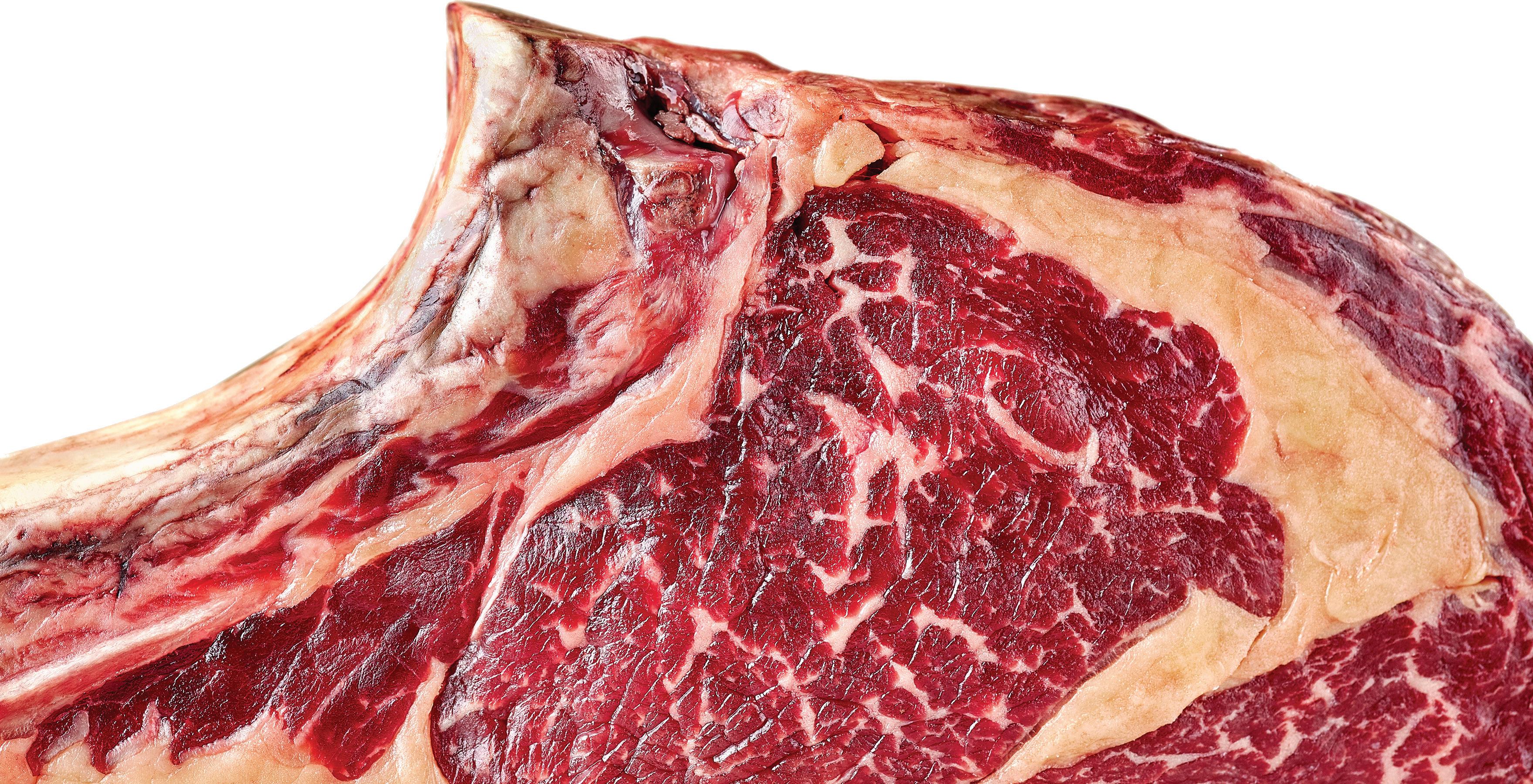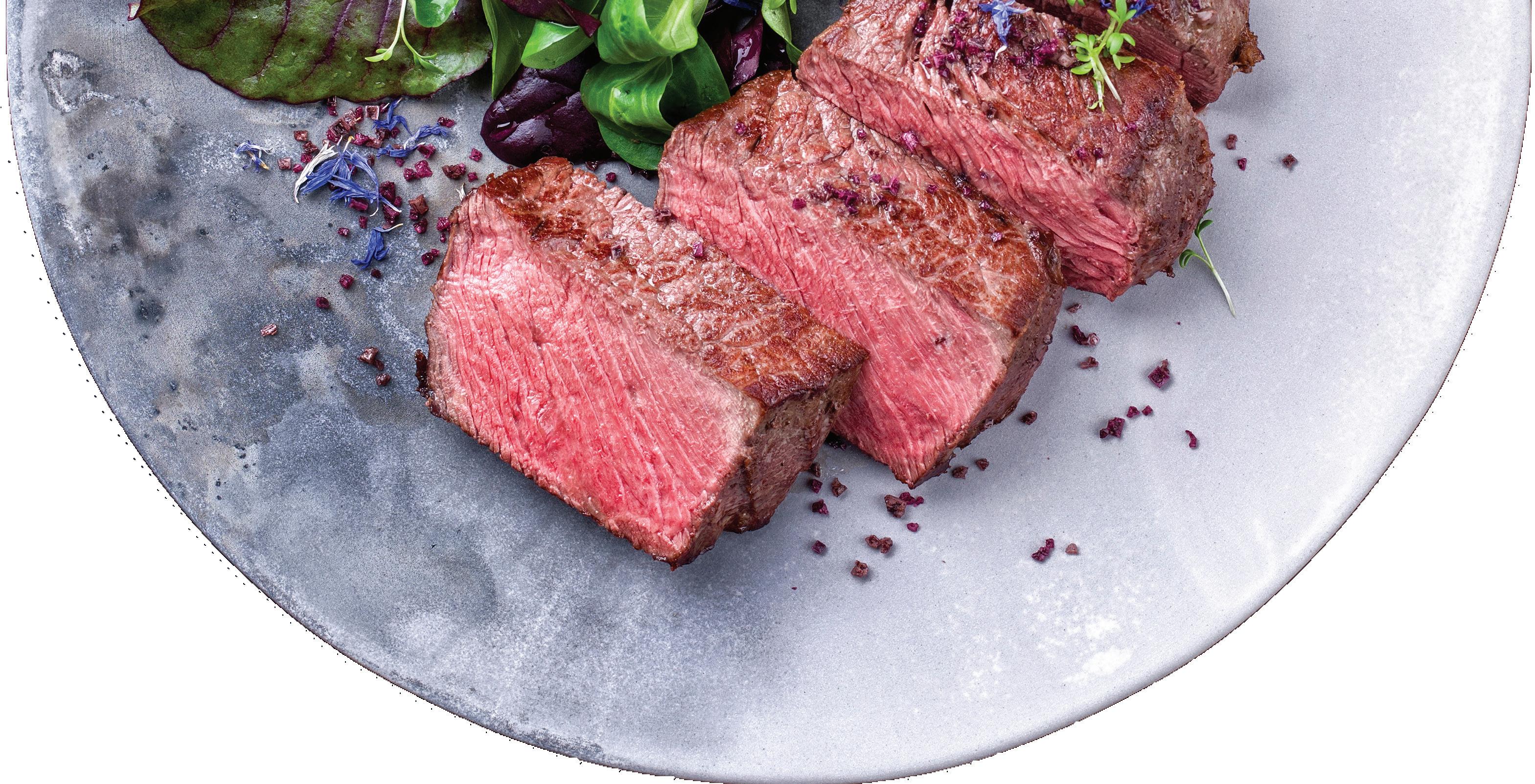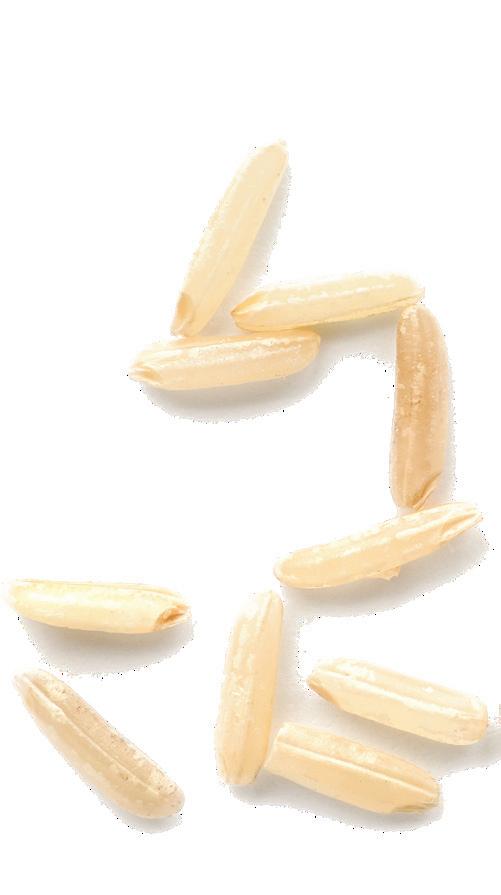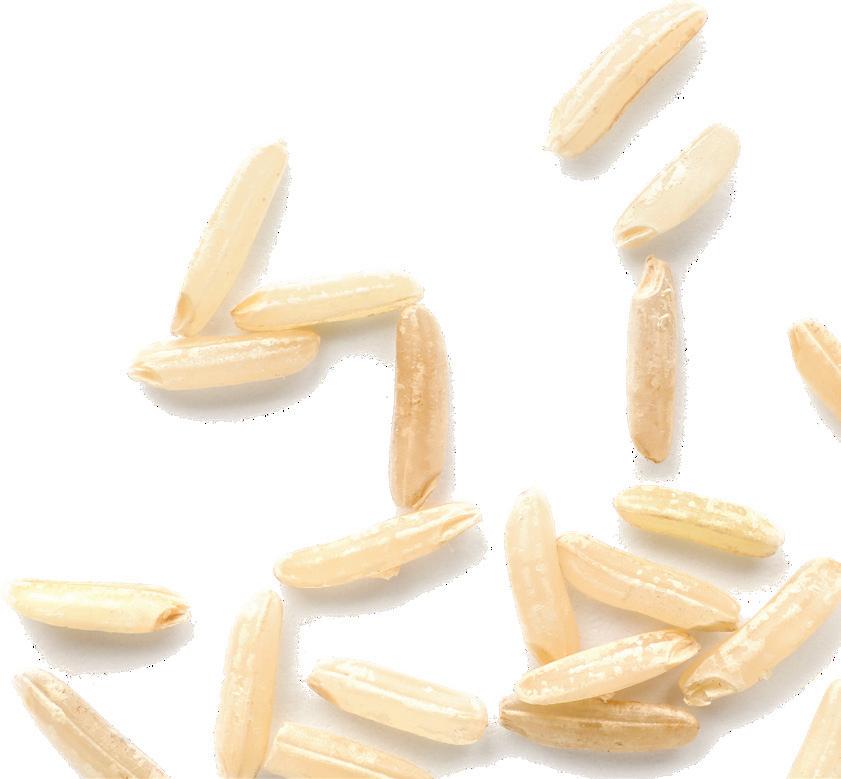
3 minute read
The Experimental Kitchen
It was during a shopping trip to the local butchers in Charlestown where Chef de Partie Tyler Rolfe came across the dry ageing processing of a chuncky T-Bone in a specialised fridge. After mentioning it to Belmont 16s’ Executive Chef and learning that there was several ways to “Dry Age” Tyler was encouraged to explore this style of food preparation further and showcase it to our Members.
I found that Koji rice was a “quick” dry age that only takes a few days instead of the few weeks it would take in the more traditional method of a temp controlled sealed space with salt rocks. For my first attempt I used a Portoro blood line strip loin, Tony (Executive Chef) said the superior marbling in this cut would assist in pulling more flavour during this process. I cut the strip loin into steaks and coated it in a Koji rice blend leaving it for 3 days on wire racks to age in a controlled temperature environment. After the 3rd day, I found that the dry aged Portoro was a lot firmer, dryer and had much more flavour compared to the normal steaks. Tony added these to the specials, and we sold out that night with really positive feedback.
Given it’s popularity I was given the opportunity to recreate this the following week with a higher number of steaks. This time I recreated the process with 28 large Hunter Valley T-Bones. I was conscious that these cuts were twice the size and thickness as the Portoro’s and felt that they would need a further day of ageing so I left them sit on wire racks in the Koji rice blend for four days in controlled temps.
On the 4th day and given their size I trussed them to keep their shape and prepare them for service time. There were 28 T-Bones in total, and they all sold out. The next time I try dry ageing, I’d like to do a rib-eye steak with a bordelaise sauce and more adventurous garnishes.


What is Koji Rice?
Koji rice is white rice that has been fermented with a Koji starter and is used in many Japanese foods such as miso, mirin and soy sauce. It is readily available in your local Asian Grocer.
Koji Rice Dry-Aged Beef
Recipe Ingredients
200 - 400g cut steak, Koji rice
Equipment
Spice grinder, flat tray, wire racks
Methods
1. Blend the Koji rice in spice grinder until a fine powder 2. Coat the steaks heavily with the rice powder until they are completely coated on all sides 3. Put onto a tray with wire racks and leave in fridge to age for 2-5 days (4-6 days for thick or large steaks) 4. After the aging period, wash the steaks under water and dry 5. Cook the steaks to your preference

Want to see this on the menu?
Complete this survey and let us know what you think of Koji rice dry-aged beef? Is this something you’d like to see at Belmont 16s?



THE HAMS ARE HERE!
Bring home a ham this Christmas for a perfect feast! Win a ham every Monday night until Christmas. Tickets on sale from 4:30pm and drawn at 6:00pm.
Take some inspiration from our Sails Eatery menu and serve the ham with a beautiful glaze. Glazing takes ham from a humble stand-by to a showstopping centrepiece on the Christmas table, adding layers of flavour along the way. Preheat the oven to 180ºC. Remove the skin from the ham leaving the fat on. Score the fat with a knife in a criss cross pattern and then place garlic cloves into the corners of the grooves. Mix 1 cup of brown sugar, 2 teaspoons of dried mustard, 1/4 cup of vinegar and 1/4 cup of maple syrup together and then brush evenly over the ham. Bake in the oven for approximately 45 minutes until heated through, basting 4 - 5 times throughout until golden brown. Once cooked remove from the oven and allow to rest for 10 minutes before carving.








